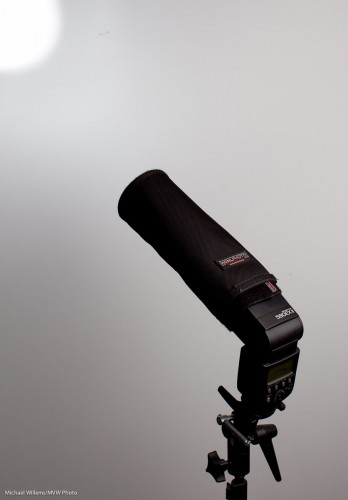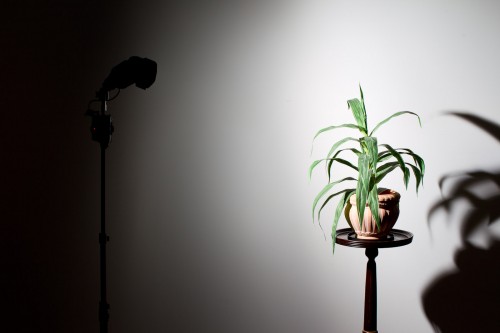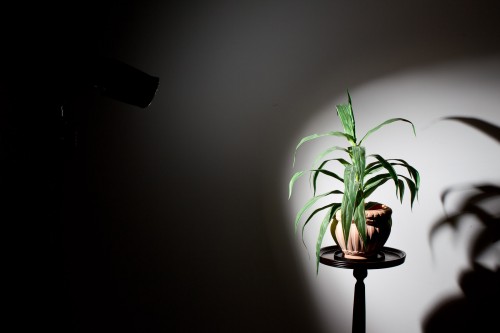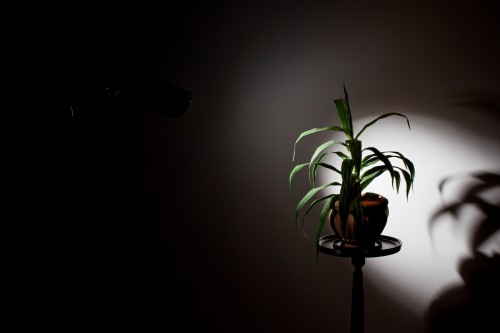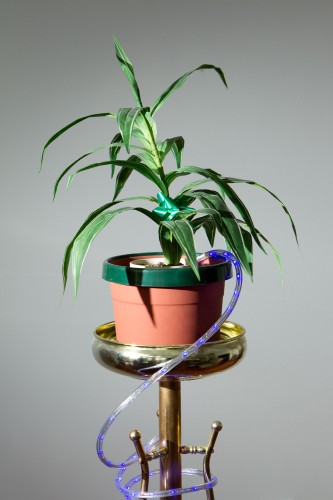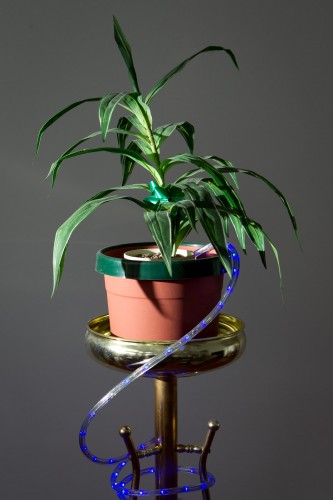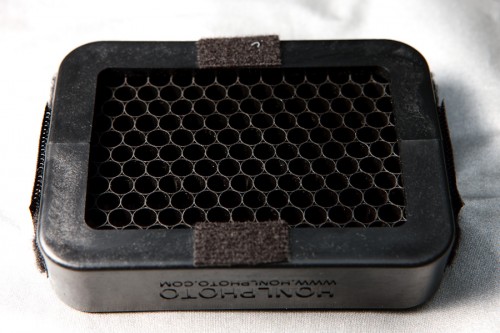Leading up to this Saturday’s Advanced Flash course in Toronto, with Guest Star David Honl, (just a couple of spots left), I thought I might share another flash modifier tip today.
And that is the use of snoots.
A snoot is a long appendage to your light that causes the light to be directed in a narrower beam. So when you really want to direct the light to go just where you want to, and nowhere else, you use snoots.
The best snoot for small flashes like a Nikon D700 or D900 or a Canon 430 EX II or 580 EX II are Honl Photo snoots (and no, Dave is not paying me to say that – it’s just that I use them almost daily in my flash work, and love them).
The snoot is also the bounce reflector, just rolled up. So it stores flash and mounts as a sturdy snoot in seconds:
Remember, from yesterday’s post, the plant lit with a grid? If instead of lighting up the whole wall, I want to direct the light to a smaller area with a nice soft edge, I use a grid, like so:
But what if I want a more clearly defined light area?
Then I use a snoot. If instead of a grid I stick a short Speed Snoot to the flash’s speed strap, I now get this:
And if I want a smaller area? Simple, then I use the long snoot:
How do you often this type of snoot? As a hair light. Or in creative lighting: remember, creative light is not about what you light: it is about what you do not light. And that is what snoots are all about.

